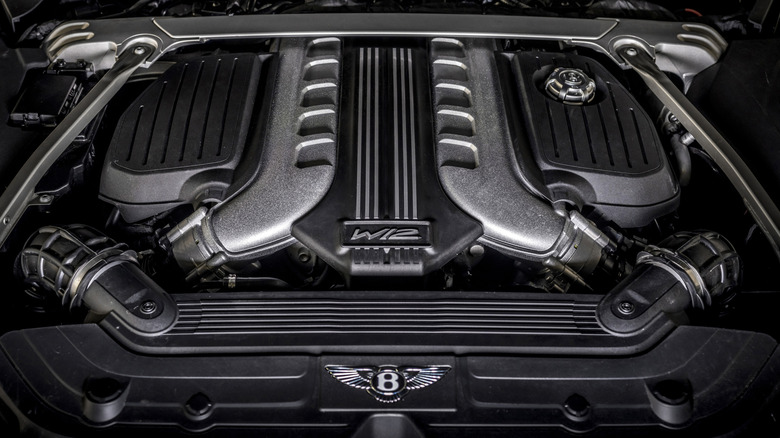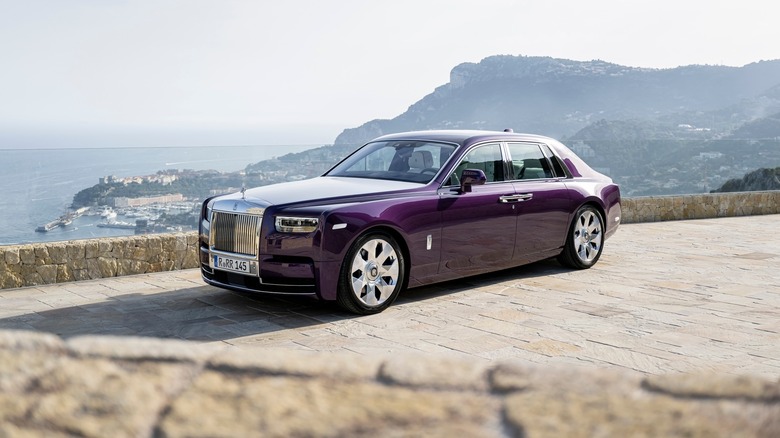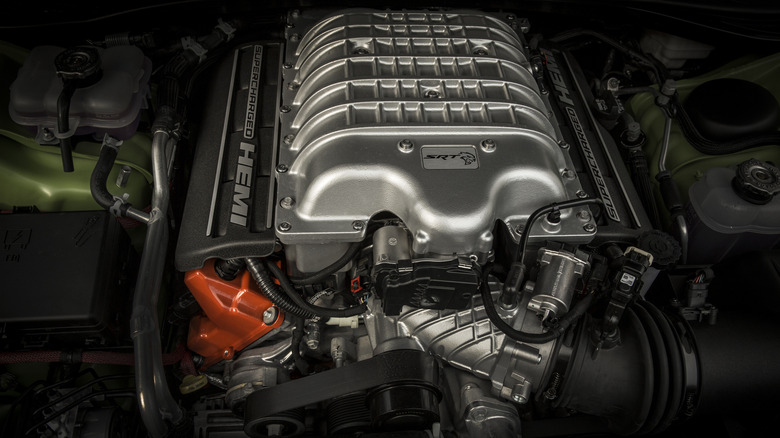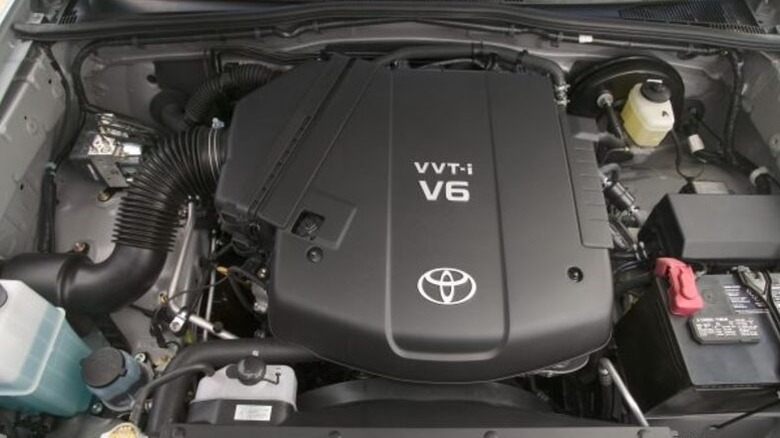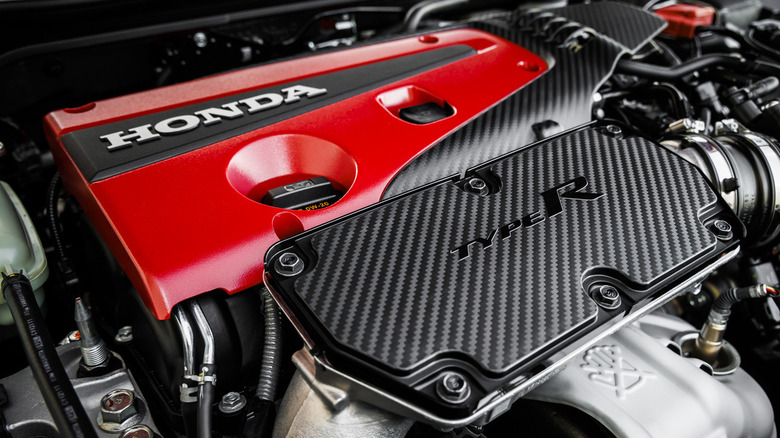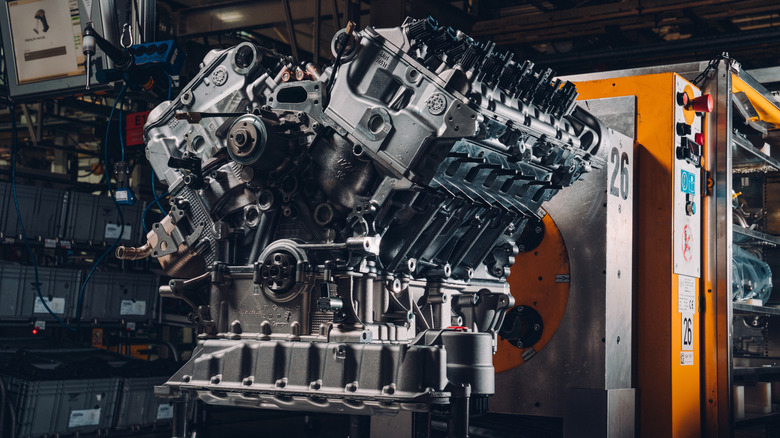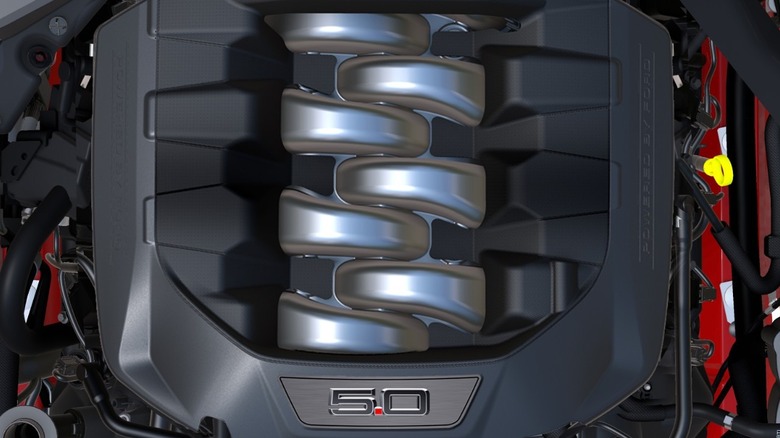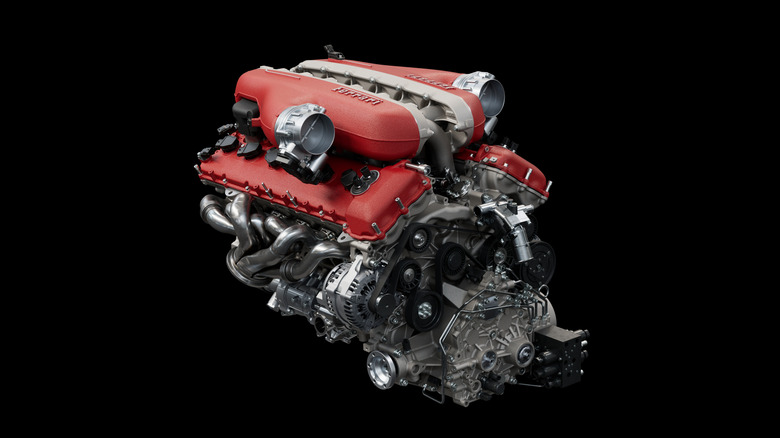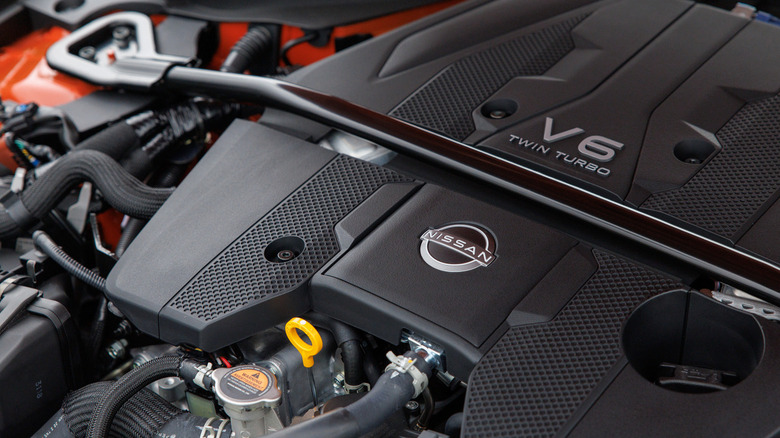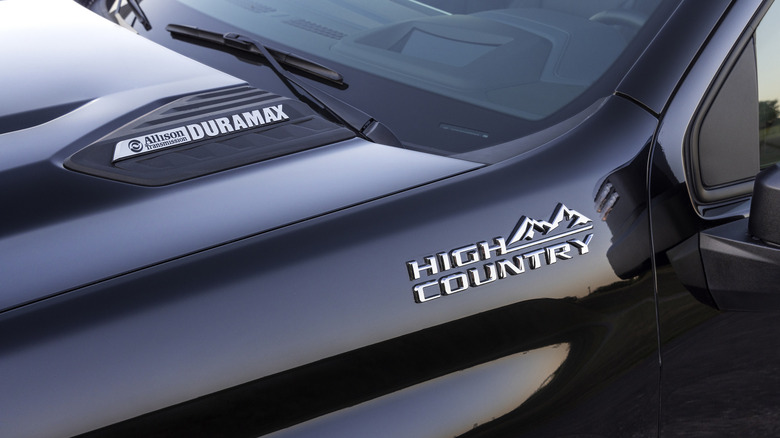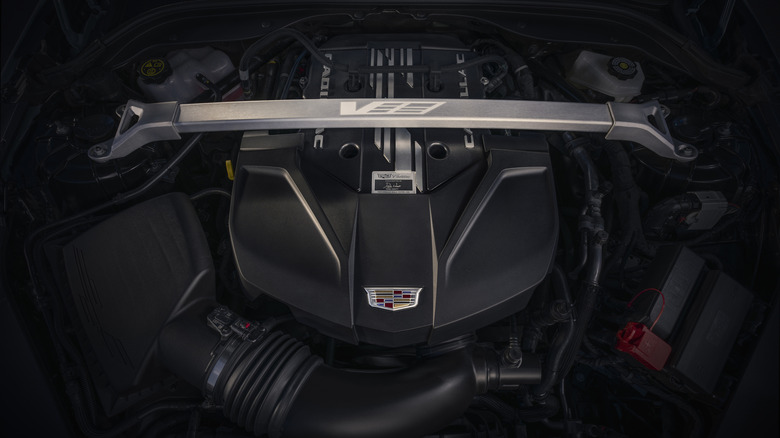10 Of The Oldest Engines Still In Production Today
In the long history of the automobile, there have been icons of every ilk, but today we're looking at legends with staying power. Not the vehicles themselves, though the Chevy Suburban with its 90-year run earns a tip-of-the-hat on that front, but the engines behind the cars. Specifically, the oldest engines that remain in production as of 2025. No concept cars, no one-off commissions, but engines that have been in continual production the longest.
Along with owning the longest-running vehicle nameplate of all time, you won't be surprised to find Chevrolet on this list of oldest engines still in production today. However, one of the oldest engines that has been rolling off the factory line without a break for more than three decades, may be unexpected. It's worth noting that even though these are the oldest engines by production lifetime, buying a new car with one of these under the hood is a smart move.
The youngest engine listed below has been built for 22 years. With that kind of longevity, OEM engineers have ample time to refine and improve upon the formula. This iterative process helps iron out the kinks that tend to pop up anytime a so-called clean sheet design is implemented. It's no easy task to stay relevant for more than 2 decades in the ever-changing automotive landscape, and for that reason, these long-lived internal combustion mills earn our respect.
Rolls-Royce 6.75-Liter V12: 2003
In the context of this list, the Rolls-Royce 6.75-liter V12 is a relative youngster at 22 years old. It was 2003 when this motor first arrived in the Roller lineup. At the time, the fabled British brand favored by the ultra-rich was close to taking the long dirt nap. Parent company Vickers had run Rolls-Royce ragged, making it a prime target for acquisition. Enter German automaker BMW and its wildly successful turnaround of Rolls into a bespoke automotive powerhouse.
One year before BMW took the reins, Rolls-Royce sold less than 40 cars in the U.K. Last year, global sales cracked 5,700. This qualifies as success and the V12-powered Phantom with its signature Pantheon grille is largely responsible for it. The 2003 Phantom marked the start of Gen VII production with a BMW-provided 6.75-liter V12. This naturally aspirated brute made 453 horsepower and 531 lb-ft of torque. A key aspect of this huge torque output was that 75% was available at just 1,000 rpm, enabling the 5,600-pound sedan to go from 0-60 in less than six seconds.
Today, the 6.75-liter V12 lives on in the Phantom VIII, a half-million-dollar bonanza of one-percenter excess. Now strapped with a pair of turbochargers, it makes a heady 563 horsepower and 664 lb-ft of twist in the Phantom, good for a 4.5-second sprint to 60. That's not too shabby for a car that weighs almost 3 tons.
Chrysler Hemi V8 (Gen III): 2003
Technically, Chrysler's Hemi V8 began production in 1951 with the FirePower series. But there have been gaps over the years, so we're focused on the Gen III Hemi that arrived in 2003. In between these two lines of Chrysler V8s was the 426 Hemi, an engine series that the Baby Boomer generation would likely regard as "the" Hemi given its use in golden age Detroit muscle cars like the Dodge Challenger and Plymouth 'Cuda.
Some will say that the modern reinterpretation of Chrysler's Hemi V8 doesn't really fit the bill as it's missing the hemispherical cylinder heads that gave this legendary engine its nickname. There is truth to that – the Gen III Hemi V8 features semi-oblate spheroid combustion chambers, otherwise known as flattened spheres. Still, it's not too far off, and Chrysler has spent unknown dollars plastering the Hemi nameplate all over its vast portfolio for the past 22 years.
This modern Hemi V8 debuted in 2003 with 5.7 liters of displacement in Ram pickups, followed by the Chrysler 300C sedan, Dodge Challenger pony car competitor, and Jeep Grand Cherokee. Early variants made 350 horsepower, but the 6.1-liter Hemi that was fitted to SRT-branded Chrysler products like the 2005 Magnum was tuned up to 425 horses. Multiple iterations have appeared since, with the 6.2-liter supercharged Hellcat from the extremely fast SRT Demon 170 hitting a peak output of 1,025 horsepower. Currently, the Hemi is still sold in Dodge's Durango SUV.
Toyota GR V6: 2002
Toyota's GR series of V6 engines, not to be confused with the Gazoo Racing division, may not share the hallowed status of a Hemi, but it sure is popular. Upon arrival in 2002, the GR V6 replaced three distinct Toyota engine families, including the sainted 2JZ straight-six of Mk IV Supra fame. Featuring an aluminum block, this new V6 would spawn a multitude of variants from the 1GR to 8GR.
Here in the U.S., the 3.5-liter V6 was the most common application with the Japanese automaker fitting it to the Tacoma, Camry, and Lexus IS, to name a few. But the 4Runner had one of the longest stretches of GR V6 fitment running from 2003 through 2024. Pointing to the impressive build quality of these Toyota engines, British sports car maker Lotus stuffed the 3.5-liter 2GR-FE V6 into a bevy of its street-legal racers like the Elise, Evora, and Exige over the years.
As of 2025, the GR-series V6 is facing extinction as many of the longtime users of this engine have switched to boosted four-cylinders. The Toyota Sequoia and Tundra continue to offer a V6, but not from the GR family which leaves Lexus as the sole purveyor in the U.S. In the current LS sedan, the 3.5-liter V6 belies its oldest engine status with modern performance. For the LS 500h, it works with a hybrid system to make a net 354 horsepower, good for 5.2 seconds in the 0-60 run.
Honda K-Series Inline-4: 2001
Honda's venerable K-Series engine is the only four-cylinder to make this list of oldest engines that remain in production, but it is one for the ages. This age began in 2001 with the Honda Civic Type R, a car that did not make it to American shores but teased its enthusiasts with high-revving wonder. Fortunately, by 2002, the K20 inline-4 was here in the Acura RSX where it featured 200 horsepower and a 7,900-rpm redline in Type S guise.
The K20Z3, fitted to the 2006 Honda Civic Si, was coveted for its high-flow heads and over the past 20-plus years, K-Series engines have found homes in everything from Honda CR-Vs, Accords, and Odysseys to the Acura ILX and TLX. Then there is the K24 four-cylinder, an engine known for its robust build quality and widespread application in the Honda lineup. However, the K20 is still considered one of Honda's all-time best engines thanks to its use in performance vehicles. Like the Honda Civic Type R.
Specifically, the latest Type R from the 11th-generation Civic series. With this hot rod, Honda fits a K20C1 inline-4 strapped with a mono-scroll turbo capable of 25.2 psi of boost pressure. Featuring a die-cast aluminum block, forged steel crankshaft with micro-polished journals, high-strength steel connecting rods, and i-VTEC, this all-aluminum mill is good for 315 horsepower and 310 lb-ft of torque. That makes it the most powerful Type R in nearly 30 years of production.
Volkswagen Group W-12: 2001
The only engine here sold in a W configuration, the 12-cylinder engine that first saw production use in the 2001 Audi A8 is a modern engineering marvel. Conceived by Ferdinand Piëch, the former VW CEO and engineer with credits that include quattro AWD and the first five-cylinder gas engine, the W-12 is effectively a pair of Volkswagen VR6 engines with a common crankshaft. Due to the narrow-angle of the donor VR6s, the W-12 was relatively compact and plenty powerful.
Along with the A8, VW put the W-12 in its Phaeton sedan. This interesting luxury-adjacent experiment shared a platform with the Bentley Continental GT and, in W-12 spec, put out 420 horsepower and lb-ft of torque. There was even a time when the Touareg SUV could be had with a W-12, but it is arguably Bentley that receives the most attention for use of Volkswagen's W-12. First arriving in this luxury liner for 2003, the 2025 Bentley Batur keeps the 12-cylinder torch alive.
Stretching the definition of a production car as only 16 hand-built examples will be made, the Batur boasts the most potent version of the W-12 ever. With six liters of displacement and a pair of turbos, there is an eye-popping 740 horsepower and 740 lb-ft of torque on tap from Bentley's shrine to automotive outrageousness. Considering the estimated $2.1 million price tag, perhaps that's a given, but we're really here to bask in the glory of the long-running W-12 engine.
Ford Modular V8: 1991
Considering Ford's Modular V8 family of engines has seen SOHC and DOHC configurations with two, three, and four-valve heads, natural aspiration and forced induction, and even V10 designs, it's safe to say this V8 is aptly named. Plus, it powers the Mustang GT, a car that practically defines the Blue Oval.
It began life in 1991 as a 4.6-liter two-valve V8 in the Lincoln Town Car. By the end of that decade, Ford had dropped versions of this setup into the Mercury Cougar, F150, Mustang, Explorer, and Expedition. A disparate group by any measure, but with as much as 300 horsepower in 5.4-liter spec, the Modular V8 had the makings of a success story.
That story expanded into the 2005 Mustang GT with its 3-valve setup, but prior to that, there was the 1999 Mustang Cobra R with a 4-valve version of the 4.6-liter Modular V8 tuned to 385 horsepower and 385 lb-ft of torque. It was this four-valve design that would see continued use in the likes of the 2005 Ford GT mid-engine supercar and supercharged 2020 Shelby GT500 with its whopping 760 horsepower. For 2025, Ford's Modular V8 carries on in the Mustang GT and range-topping Dark Horse, where it's rated for a naturally aspirated 500 horsepower.
Ferrari F140 V12: 2002
Ferrari and V12 engines are inextricably linked thanks to legendary Ferrari engineers like Gioachino Colombo and his eponymous 12-cylinder motor. But today, we're looking at the F140 series of Ferrari V12s, an engine that first showed up in 2002 with the Enzo supercar. The most powerful naturally aspirated engine in the world at the time, this 6.0-liter beast made 660 horsepower at 7,8000 rpm and could push the Enzo to a top speed of 218 mph.
Since then, the F140 V12 family has seen use in the 599 GTB grand tourer and FF shooting brake. However, it's hard to beat the current Ferrari 812 Competizione for pure F140 V12 potency. In that race-ready variant of the 812 Superfast, the 6.5-liter V12 features diamond-like coated camshafts, variable geometry inlet tracts, and a 9,500-rpm redline. Output measures 818 horsepower, and performance highlights include 2.6 seconds for the 0-60 run and a 212-mph top speed.
This is impressive, but of all the F140 V12-powered Ferrari legends, the blasphemous Purosangue may be the most notable mainly because it's an SUV (though Ferrari doesn't use that descriptor for its first vehicle with four doors and four seats). Whatever you think of it, the front mid-mounted engine in the Purosangue keeps the Ferrari V12 flame-burning hot with 715 horsepower, 80% of its 528 torques available at 2,100 rpm, and the ability to sling to 60 in just 3.3 seconds.
Nissan VQ Series V6: 1994
Nobody would describe Nissan's VQ series of V6 engines with the same breathless prose as a Ferrari V12, but this six-cylinder mill has been quietly spinning for more than 30 years, making it one of the oldest engines still in production today. It all began with a mandate by Nissan execs to create an engine "as agile as a feather" with a "pleasant acceleration sound." Perhaps that's a bit breathless, but this is forgiven considering the VQ's staying power.
Replacing the VG engine that dated to the 1980s, Nissan's VQ V6 engine arrived in 1994 with the Cefiro and Maxima. It wasn't until 1996, however, that American car buyers got to sample the goods with the Infiniti i30 sedan. Perhaps the VQ's most well-known application began with the 350Z sports car in 2003, where it displaced 3.5 liters and made 287 horsepower. Strapped with a pair of turbos, the 3.0-liter VQ V6 in the 2025 Nissan Z boasts 400 horsepower in stock spec or 420 with the NISMO variant.
It also continues to be used as a 3.8-liter V6 in the 2025 Frontier pickup truck and a 3.5-liter six-pot in the Pathfinder SUV. Of all the various vehicles Nissan fitted the VQ series engine to, the Maxima sports sedan came with one for the longest time, from 1994 through 2023. Nissan's VQ engines may not enjoy the icon status of the VR38DETT, but there's no denying this old workhorse is hard to beat when it comes to production lifetime.
GM Duramax V8: 2001
Over the past 20-odd years, General Motors has applied its Duramax turbodiesel engine moniker to four, six, and eight-cylinder mills, but it is the V8 variant that has been at this game the longest. Arriving in 2001 as a 6.6-liter engine, the original Duramax was born from a collaboration between GM and Isuzu. This LB7 V8 was fitted to the automaker's heavy-duty pickup trucks, where it offered 300 horsepower and 520 lb-ft of torque.
As with all the engines on this list, a long production lifetime for the Duramax translated to constant improvement at the hands of GM engineers. By 2004, the 6.6-liter turbodiesel V8 was putting down more than 600 torques, and with the LML version that debuted in 2011 featuring a new high-pressure fuel pump and a variable vane turbo, output came to 397 horsepower and 765 lb-ft of twist. Today, however, the long-running 6.6-liter Duramax V8 makes the original engine seem tame in comparison.
Debuting in 2017, this L5P variant swapped the Garrett turbocharger for a Borg-Warner unit, received an overhauled block, and an upgraded rotating assembly. It began life making 445 horsepower and 910 lb-ft of torque, but as of 2024, those numbers are up to 470 and 975, respectively. Guessing what's next for this venerable GM diesel V8 is hard, but here's to hoping one of the oldest engines in production continues its run of impressive performance.
Chevy Small-Block V8 (LT): 2014
Last, but far from least, is the Chevy small-block V8, which, depending on your definition, could be an engine with a respectable production lifetime or the oldest engine in continuous production by a long shot. That latter mentality is rooted in the fact that Chevrolet started making its renowned small-block V8 in 1955 with the Task Force series of pickup trucks and the original Corvette. However, a lot has changed since these Turbo-Fire mills debuted 70 years ago.
In generational context, the LT series engines that kicked off fifth-gen production in 2014 are still an impressive 10 years old. Unrelated to the LT1 series from 1992, these modern Chevy small blocks came with a comprehensive redesign, including direct injection, oil-spray piston cooling, variable valve timing, and active fuel management. When the supercharged 2019 Corvette ZR1 showed up with 755 horsepower, it was the most powerful small block from the Bowtie brand at the time.
As of 2024, the Detroit automaker has built more than 100,000,000 small block V8s, which is hard to get your head around, but it shows the lasting power of this highly regarded engine. Today, these V8s are fitted to everything from the C8 Corvette to the Silverado pickup, Tahoe SUV, and Cadillac CT5-V Blackwing. Considering General Motors invested $845 million into the development of the upcoming sixth-gen Chevy small-block V8, the streak appears poised to continue.
